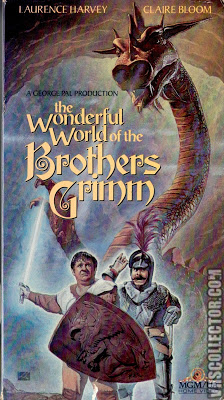Director: Henry Levin; George Pal
Year: 1962
Rating: 5.0
This was a reasonably popular film when it was released in Cinerama in 1962,
but due to a lack of quality digital distribution it has sort of slipped
through the cracks. Cinerama was a new form of making films using three cameras
simultaneously shooting the film and then displaying it with three projectors.
How the West was Won was the first feature film to use this technology (there
had been a few travelogues shot previously that are worth seeing) and this
film was the second. These other Cinerama films were restored and released
on digital by Smilebox that look great - but not for this film. So there
was only a laser disc back in the 1990's, an Italian DVD that is supposed
to be very bad and a version that TCM showed that seems to be the best. That
is the version I saw but it too has issues as you can easily see the three
panels, it gets smudgy at times and the colors are a bit faded, but as a
person who used to watch copies of copies of copies of Hong Kong vhs tapes
this was good enough for me.
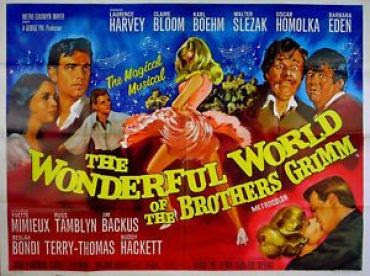
It is a fanciful look at the lives of the Grimm Brothers that is reasonably
close to the truth unlike The Brothers Grimm released in 2006 that is utter
nonsense. The brothers were serious scholars in the early 1800's who were
dirt poor and who as part of their research began collecting German folk
tales. These were eventually collected and published in two books consisting
of over 200 stories. Many of these folk or fairy tales have become very famous
- Sleeping Beauty, Cinderella, Hansel and Gretel, Rapunzel and Snow White
among them.
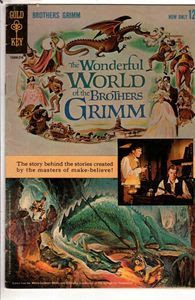
The film is produced by special effects master George Pal who was famous
for his many science fiction films and the directing is split between Pal
directing the enactment of three fairy tales while Henry Levin directed the
narrative. It's target audience seems to be for children and in general it
is fairly dull going that probably hasn't aged all that well and today I
would guess it would not even appeal all that much to children. One brother
(Karl Bohm) is devoted to his academic work while his brother (Laurence Harvey)
is fascinated hearing folk tales from the common folk. There are attempts
at some drama in there but most of it falls rather flat.
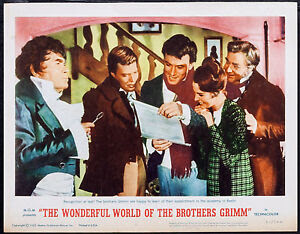
There are three of the Brothers Grimm tales told here and they add a little
flash to the film as Pal uses some interesting camera work and stop motion
special effects that feel charming if not cutting edge even at that time.
Pal was another European émigré driven out of Europe by the
rise of Nazism - but he had been using stop motion since the 1930s in what
he called his Puppetoons - Sleeping Beauty and Aladdin being two of these.
In Hollywood he continued making shorts until he began producing feature
films in the 1950s - When Worlds Collide, The War of the Worlds, The Time
Machine, Destination Moon and Atlantis: The Lost Continent. He had been wanting
to make this film for years before he finally did.
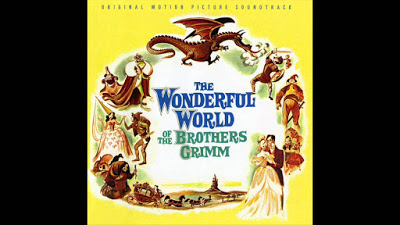
The three tales are lesser known ones - The Dancing Princess (reduced from
the Grimm's tale from twelve to one) - and starring Yvette Mimieux, Jim Backus
and Russ Tamblyn; the Cobbler's Tale with elves making shoes and The Singing
Bone starring Terry Thomas and Buddy Hackett fighting a dragon (in the Grimm's
telling it was a wild boar). The first two have musical scenes. Also in the
film is Claire Bloom as the wife of one brother and Barbara Eden as the girlfriend
of the other - and interestingly they don't get married which in fact is
true - one brother never married. Throw in character actors Walter Slezak
and Oskar Homolka.






